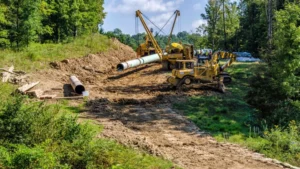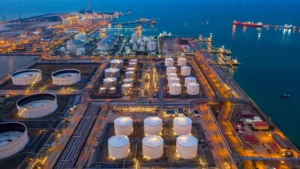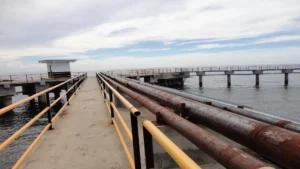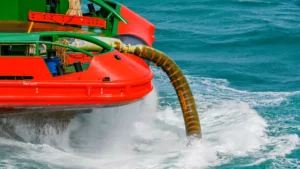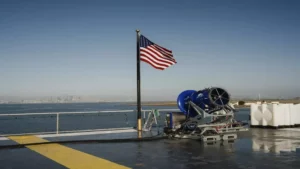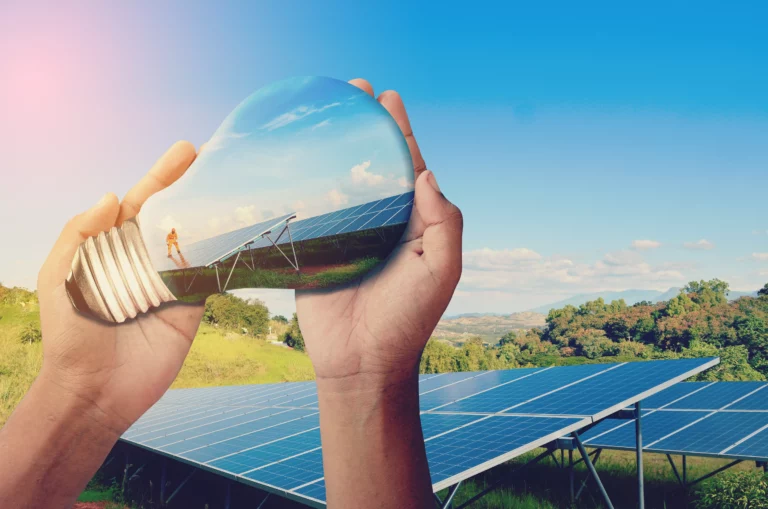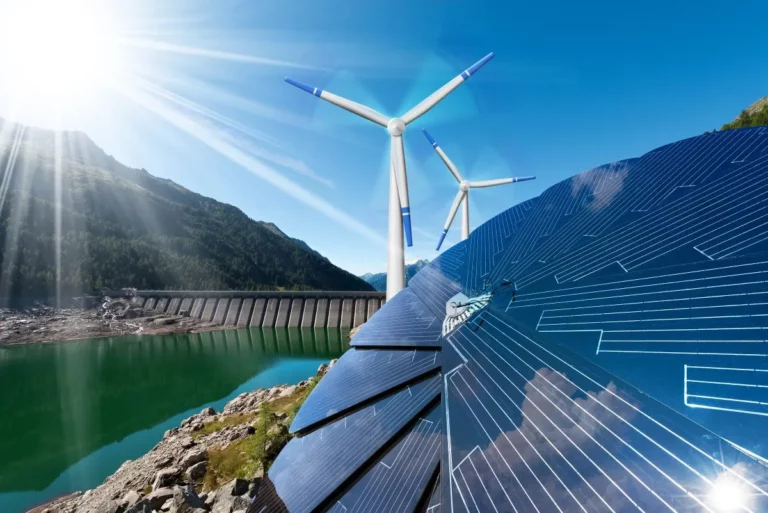Introduction
The construction and operation of offshore wind farms can result in environmental impacts of wind energy on habitats and wildlife. The noise produced during construction, and the electromagnetic fields generated can affect fish, mammals and seabirds.
The installation of offshore wind turbines and infrastructure can physically alter the seabed, affecting the ecosystems and organisms dependent on these areas for food, reproduction or shelter.
These turbines, larger than terrestrial ones, are installed on towers fixed to the seabed, disturbing habitats and generating noise that affects the communication of marine mammals. Additionally, wind energy generation, although clean, can influence migration patterns and turbine propellers can also pose collision risks to birds in flight.
In this context, prior to addressing the dissertation on the environmental impact of wind energy in transition, a brief description of offshore wind energy is presented, the main projects in this area and, finally, the influence of the installation of these will be analyzed. wind projects in the environment.
How is offshore wind energy generated?
The construction of offshore wind farms, a growing way to harness renewable energy, raises important questions about their impact on the marine environment. The installation of large structures and the generation of wind energy can have both direct and indirect consequences.
Generating electricity using wind turbines involves capturing the kinetic energy of the wind to convert it into mechanical energy and then into electrical energy using a generator. Electricity is transmitted through cables from the turbines to marine substations, which efficiently transform and transmit it to the land grid for distribution to homes, businesses and industries.
These facilities, located in oceans, seas or large lakes, offer available space, reducing the environmental impact of offshore wind energy on terrestrial ecosystems, among these parks is considered the Walney Extension with a capacity of 659 MW, which currently makes it the largest offshore wind farm in the world. However, they require more complex construction and maintenance due to the challenging marine environment.

This energy stands out as a promising source of renewable energy due to advantages such as potentially higher wind speeds and more consistent patterns compared to land-based locations. However, it presents unique challenges in terms of construction, maintenance and transmission due to the marine environment and the logistics of installing and operating equipment far from shore.
Offshore wind energy potential
The potential capacity of offshore wind energy represents a promising source of renewable energy production. Factors driving its potential include abundant and stable wind resources in offshore areas, advances in turbine technology, the ability to generate high levels of electrical energy, ample space available in offshore areas, lower environmental impact compared to onshore installations. firm, and the global expansion of this industry that unleashes economic and employment opportunities.
As technologies continue to be refined and investments in renewable energy increase, continued growth in the potential of offshore wind is anticipated, contributing significantly to the transition to a more sustainable, lower carbon future. Below are the most significant offshore wind energy projects
Development of offshore wind energy projects
Vineyard Wind offshore wind project in Massachusetts.
| Project | Vineyard Wind (Massachusetts) |
|---|---|
| Planned capacity | More than 800 megawatts (MW) |
| Government Objectives | Double offshore wind generation capacity by 2030 and decarbonize the electricity sector by 2035 |
| Official statement | “The United States is poised to become a global clean energy leader” – Laura Daniel Davis, Principal Under Secretary for Land and Mineral Management |
| Recent government action | Reversing the previous decision to cancel the permitting process for Vineyard Wind, resuming the environmental review process |
South Fork Wind Farm Project in New York
| Project | South Fork Wind Farm (New York) |
|---|---|
| Planned capacity | About 130 megawatts (MW) |
| Highlights | Placement of first turbine at South Fork Wind offshore wind farm, marking historic milestone in New York’s transition to clean energy |
| Location | 35 miles from Montauk |
| Significance | First commercial-scale wind farm in US federal waters |
Dogger Bank offshore wind farm project in the United Kingdom.
| Project | Dogger Bank Wind Farm |
|---|---|
| Planned capacity | More than 3,600 megawatts (MW) |
| Location | UK waters, 70 nautical miles (130 km) off the Yorkshire coast |
| Phases | Divided into three phases of 1.2 GW each, known as Dogger Bank A, B and C |
| developer | SSE Renewables |
Dogger Bank offshore wind farm project in the United Kingdom.
| Project | Dogger Bank Wind Farm |
|---|---|
| Planned capacity | More than 3,600 megawatts (MW) |
| Location | UK waters, 70 nautical miles (130 km) off the Yorkshire coast |
| Phases | Divided into three phases of 1.2 GW each, known as Dogger Bank A, B and C |
| developer | SSE Renewables |
What is the Environmental Impact of Offshore Wind Energy?
It is interesting to understand that when talking about renewable energies, even though these are “clean energies”, they are not free of environmental impact. Development must be accompanied by good environmental practices; in the conservation of biodiversity and ecosystems, otherwise, it is not development.

Although there is a gap between what is being done and what the projects are going to have to do, regarding the preservation of biological diversity in the area where the parks are established. The construction and operation of these parks have a significant environmental impact, which is manifested in several key aspects 2 .
- Alteration on flora and fauna: The installation of foundations for wind turbines involves construction activities on the seabed, affecting sensitive underwater habitats. This can result in the disturbance of marine biological communities, such as kelp beds and mollusk habitats, which in turn affects fish and crustacean species that depend on these environments.
- Underwater noise and marine life: During the construction and operation phase, underwater noise emission can interfere with marine life. This noise can disrupt the communication and behavior of marine mammals, including whales and dolphins, which could affect their migration, reproduction, and foraging. The noise caused by wind turbines is due precisely to the movement of the blades in the air. There is also some noise coming from the mechanical parts of the turbine. The noise will depend on the design of each wind turbine and the wind speed.
- Risk to seabirds: Moving turbine propellers pose a potential risk to seabirds in flight. Collisions with these structures can have detrimental consequences for bird populations and negatively affect biological diversity in the region. The impact is widely studied, deaths of birds and bats have been documented not only due to direct impacts, but also due to changes in atmospheric pressure caused by the rotation of the blades. Alterations also occur in their habitats.
- Changes in migration patterns: The presence of these parks can alter bird migration patterns and fish movement routes. These changes can impact populations of migratory species and ultimately affect the dynamics of marine ecosystems.
Conclusions
Despite these impacts, offshore wind farms also offer benefits by reducing greenhouse gas emissions and providing a renewable energy source. However, it is crucial to address environmental challenges through sustainable construction practices, noise mitigation technologies and the implementation of conservation measures to protect marine biodiversity.
The responsible implementation of offshore wind farms requires a comprehensive approach that balances the need for sustainable energy with the preservation of marine ecosystems. Continued research, careful planning and commitment to sustainable environmental practices are necessary to minimize negative impact and ensure harmonious coexistence between renewable energy and conservation of the marine environment.
References
- Rock To Joseph; “The 10 largest offshore wind farms in the world: Walney Extension turns the rankings upside down” Ingenia Energy Challenge; Published 09/10/2018.
- Taboada J; “Environmental impact of offshore wind farms”; Tyzmagazine






